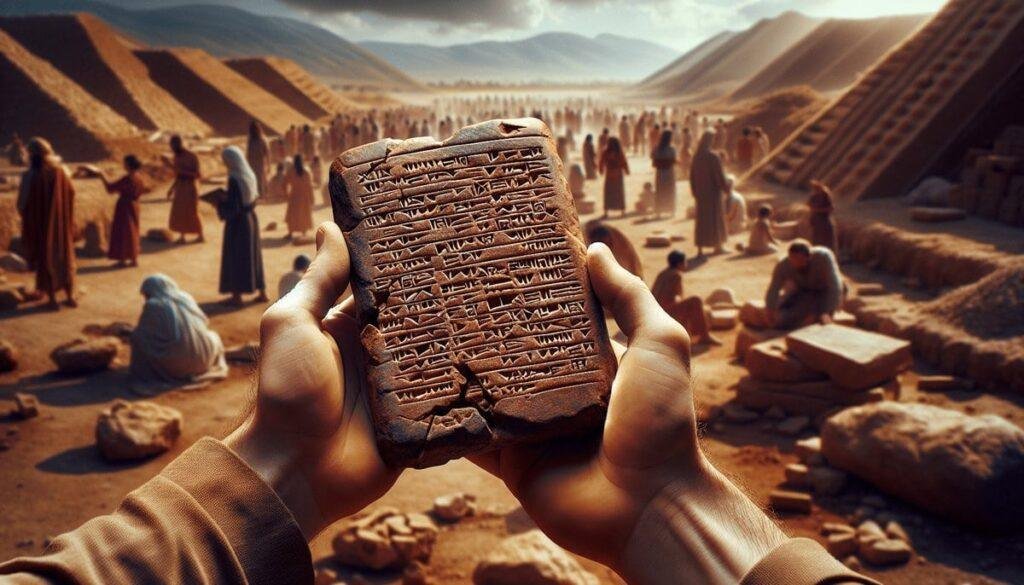Have you ever wondered what secrets lie within the stones quarried for King Solomon’s Temple? As we delve into the recesses of ancient history, the very stones bear witness to tales untold, offering a portal into a world where mythology meets archaeology. The unveiling of Solomon’s lost quarries not only adds layers to biblical narratives but reshapes our understanding of an era marked by monumental construction feats.
Introduction
The discovery of Solomon’s quarries has ignited interest across the realms of biblical archaeology and historical scholarship. Situated near Jerusalem, these ancient sites whisper secrets from the past, providing clues to the temple construction spearheaded by King Solomon around 957 BCE. As believers and historians alike ponder their significance, these quarries may yet unlock deeper insights into antiquity. Within this exploration, we will traverse the biblical and historical context of the quarries, examine the archaeological evidence unearthed, and evaluate their profound significance.
Discovery Context
Biblical References
The Bible offers a vivid tapestry that intertwines divine commandments with human endeavor. In the First Book of Kings, Solomon’s Temple is described as an edifice of remarkable splendor and divine purpose, constructed with “costly stones, cut according to measure” (1 Kings 5:17). These scriptural accounts provide a significant backdrop to the ongoing exploration of the quarries believed to have provided those stones.
Historical Background
Throughout history, King Solomon has been renowned for his wisdom and grandeur, with the temple serving as a pinnacle of his reign. The temple’s construction is attributed to a collaborative effort involving the Tyrian King Hiram, providing cedar wood and skilled laborers who shaped the stones. While historical records from the Phoenicians complement biblical accounts, it is the physical evidence from the quarries themselves that bridges the gap between history and legend.
Geographic Location
Solomon’s quarries, also known as Zedekiah’s Cave, are located just outside Jerusalem’s Old City. This subterranean network extends approximately 280 meters in length, providing a labyrinthine glimpse into the storied past. Archaeologists and explorers have long been drawn to its mysterious depths, seeking to understand its role in the temple’s construction.
Recent Findings
Ongoing excavations and studies continue to illuminate these ancient caverns, revealing them as likely the source of the temple’s “melek” stone—a soft, white limestone easily carved yet durable. Modern technology has aided in ascertaining the age and origins of materials extracted, enhancing our understanding with precision and clarity.
Archaeological Evidence
Specific Artifacts
As excavations progress, an array of artifacts surfaces from the depths of Solomon’s quarries, each offering a clue to the past. Tools used for stone extraction and carving mark these as sites of industrious activity, while inscriptions and etchings lend a voice to the once-silent limestone walls.
Dating Methods
Through methods such as radiocarbon dating and stratigraphy, researchers can approximate the period during which these stones were quarried. The consistency of carbon isotopes and sediment layers aids historians in aligning the quarry’s operational timeline with King Solomon’s rule.
Physical Descriptions
The quarries themselves offer a remarkable study in ancient engineering. Networks of corridors and chambers illustrate the ingenuity of early builders, who mastered the art of tunneling and resource extraction. The scale and craftsmanship visible in these sites reflect a technological prowess that testifies to the former grandeur of Solomon’s Temple.
Expert Interpretations
Archaeologists and historians provide interpretations that enrich and challenge our current understanding. Dr. Ronny Reich, a renowned archaeologist specializing in the First Temple period, argues that these new findings do more than reinforce biblical narratives— they also invite fresh analysis of cross-cultural influences in ancient construction practices.
Significance
Biblical Implications
The implications of Solomon’s quarries resonate deeply within biblical studies. They substantiate aspects of scripture with tangible proof, fostering dialogue between secular historians and religious scholars. The convergence of material evidence with biblical text reanimates the possibility of historical accuracy in ancient religious documents.
Historical Impact
From a historical standpoint, the quarries represent a fulcrum around which numerous narratives pivot. This evidence contributes to a more nuanced comprehension of regional politics, trade, and technological exchange during the era of Solomon’s reign. Questions about labor organization, resource acquisition, and cross-cultural collaboration come to the forefront.
Modern Understanding
In today’s context, exploring Solomon’s quarries harbors more than mere academic interest. It enriches cultural heritage management and conservation efforts, promoting sustainable practices that respect historical sites while making them accessible for future generations.
Research Status
The quest to uncover further secrets from Solomon’s quarries continues, with interdisciplinary research programs feeding our hunger for understanding. Collaboration among archaeologists, historians, and theologians ensures a balanced exploration that respects and redefines existing narratives.
Conclusion
In retracing the steps of ancient quarrymen, we inch closer to the heart of what once was a marvel of the ancient world. The quarries associated with Solomon’s temple invite us to reexamine the intersection of myth, scripture, and material evidence. As the threads of history unfurl, future discoveries may forever alter our perceptions of the past. Engage with the lingering question: What other secrets buried beneath millennia may yet come to light?
This foray into Solomon’s quarries is more than an academic exercise; it is a bridge connecting disparate epochs, inviting you to question, to learn, and perhaps discover your own revelations about a temple whose glory reverberates through time.





